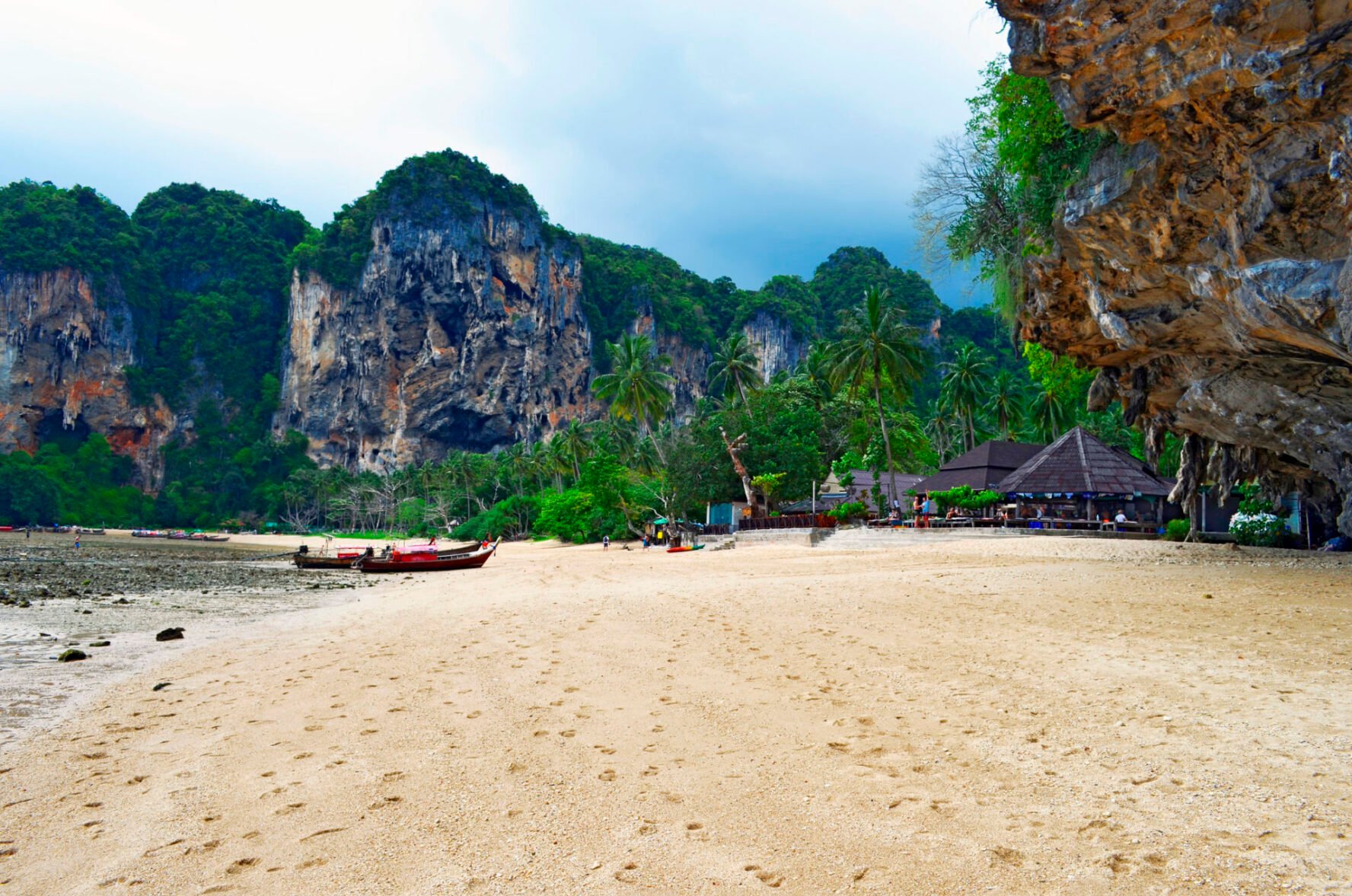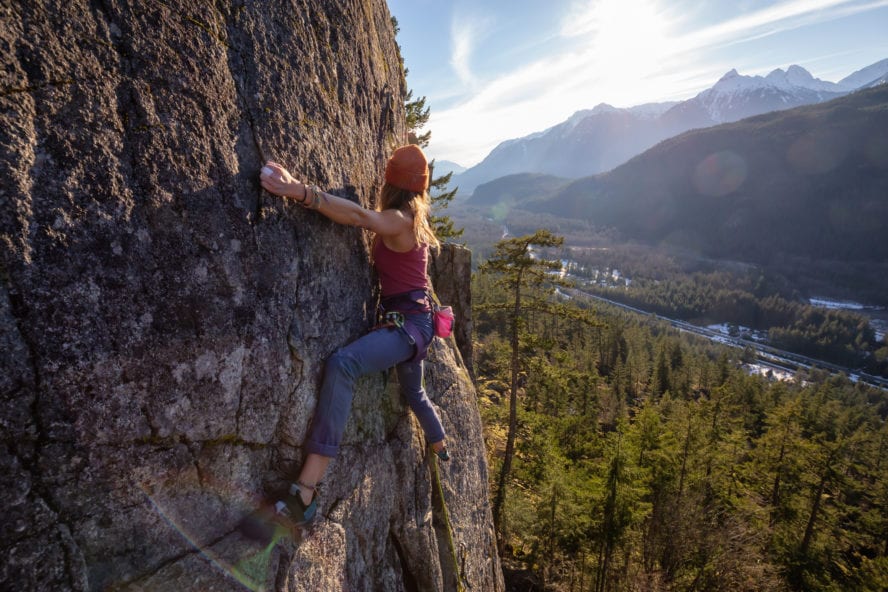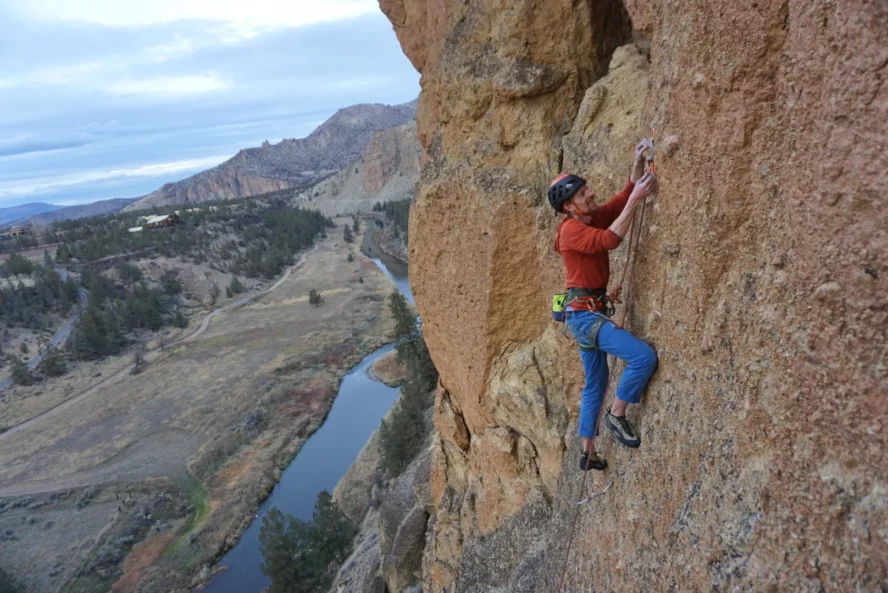I’ve been climbing for around 14 years, and while I’ve traveled and climbed around the world, I’ve always returned to the crags that I call home. Thailand has some of the highest quality, jaw-droppingly beautiful, and most underrated climbing spots in the world, rivaling the best states for rock climbing in the US. From beach-climbing paradises like Tonsai and Railay to lesser known hot spots like Kao Jin Lae, the Land of Smiles has endless limestone crags and caves that easily top my list of favorites. The limitless potential for new routes and the growing culture of recreational climbers means climbing in Thailand is only set to improve. If you’re looking for the best place to climb, here are six of my favorite spots.
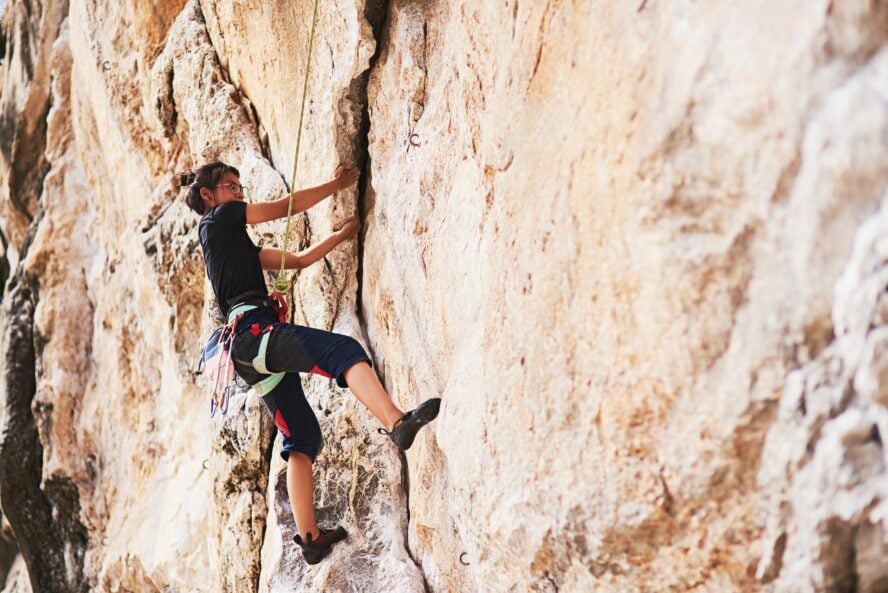
A little about the history of climbing in Thailand
The first routes in Thailand were set by French climbers more than 30 years ago, and even since I’ve been climbing, the culture has changed dramatically. There are many locations, some on this list, which are continually improving with new routes. World class sport crags and bouldering spots have consistently dotted up, with some amazing single-pitch climbs like that of Nam Pha Pa Yai, and classic multi-pitches like those at Kao Jin Lae. Perhaps the most well known is the beach climbing at Tonsai and Railay, twin destinations in the Krabi Province. I personally started at Crazy Horse, located in the mountainous northern Chiang Mai Province.
Thailand not only has an amazing diversity of climbing terrain, but it’s also a cultural experience with a friendly outdoor community. It is a dream destination for climbers, backpackers, and world travelers looking for authentic experiences with locals and excellent climbing worth remembering. It’s impossible to call any single location the best, so check out my list of Thailand’s best rock climbing, and plan your adventure around what you’re looking for.
1. Tonsai and Railay
If your ideal day involves waking up on the beach, grabbing a coffee, and then climbing on perfect limestone cliffs right above that same beach, then Tonsai and Railay are the places for you. These twin climbing destinations, separated by a short walk through the mountains, have some of the best climbing you will find in Thailand, hands down — world-class single-pitch, multi-pitch, and bouldering matched only by the beauty of the beaches and lush jungles surrounding them. This is why these spots sit together at the top of my Thailand list. My favorite is the multi-pitch, which I would recommend to intermediate and advanced climbers. There are also loads of amazing single-pitch overhangs and boulders, suited to anyone who finds their way to this climbing paradise.

Located in the Southwestern Krabi Province, Tonsai and Railay offer beginner to expert climbers from around the world a wide range of grades to choose from. The area is Thailand’s most popular and one of my favorites for good reason, and while crowds can get fairly large, the year-round climbing season, friendly community, and abundance of housing options make it one of the world’s best climbing destinations. If you are looking for a true dirtbag experience, I recommend camping and climbing in Tonsai. For those more suited to hotel resorts and bungalows, climbing in Railay is your best bet. Gear shops, bars, and restaurants can also be found throughout both areas.
The majority of people know climbing in Thailand because of Krabi. You come to climb next to the beach with really nice views, and from there you end up spending a month or more.
Tonsai and Railay - Good to Know
Beginner to advanced (4a/5.4 up to 8c/5.14b)
Most routes are overhanging on pocketed limestone with many stalactites. It is possible to find some slab climbing.
Fly to Phuket or Krabi (better option), take the bus to Ao Nang, from there a boat takes you to Tonsai or Railay
November to March (high-season) and April to October (low season). Expect queues in popular routes during high season!
Besides climbing, there are plenty of other activities like yoga, snorkeling, kayaking, hiking and slacklining
Some crags are only accessible by boat or during low tide, so check the tide-forecast
The Pocket Guide by Sirichai Pongsopon
Exotic animals abound, like monkeys, scorpions, snakes, and lizards. Check cracks for possible guests if you are climbing some less traveled routes
Stock up on mosquito coils and sprays in Ao Nang. Mosquitos abound, beware of tiger mosquitoes, as they can transmit dengue fever. They are generally active only just before sunrise and after sunset
Climbing accessories such as chalk and tape can be expensive, so bring some with you to save money. Also, a large rope pad is very handy as sand gets everywhere
Check the condition of bolts and slings before you clip them! Due to the areas’ proximity to the ocean, many routes need re-bolting with expensive top-quality titanium bolts. If you can, donate to the re-bolting efforts at local climbing shops
It’s not drinkable, so buy bottled water
2. Nam Pha Pa Yai
For me, climbing is all about the people you climb with, being in the natural world, and sending on amazing routes. I think there’s no better place to find these things than at Nam Pha Pa Yai. Located in West Thailand with an abundance of intermediate-level routes, this area is home to some of the best single-pitch climbing that you will find anywhere in the country.

This area is located on the Pasak River just a short 2-hour drive northeast of Bangkok, and with lush jungles, mountainous views, great camping, and amazing cultural experiences nearby, it is a natural climber’s haven. The climbing area has been growing over the last decade, and there is still endless potential for new routes. Recreational climbers have come to this spot more and more since it was first established, and I’d recommend that you go before it hits the mainstream. There are a few main areas with amazing climbing, one which can be accessed by zipline or with a local boatman, and another accessible by kayak.
I recommend that climbers enjoy a long stay at the nearby Nam Pha Pa Yai campsite, with the company of my friend Joy who runs and maintains the area. In April and May temperatures are too high to enjoy the climbing, but for the rest of the year it’s a climber’s paradise.
I love Nam Pha Pa Yai because you can escape from civilization for a little bit — be in nature, do some climbing, go camping, and all just a short drive from Bangkok.
Nam Pha Pa Yai - Good to Know
Nam Pha Pa Yai is just a couple hours-drive northwest of Bangkok
Grades are most suited towards intermediate to advanced climbers (5.9/5b to 5.13c/8b), though there are some routes for beginners
Very technical climbing with all sorts of vertical and overhanging limestone, and some tufas.
Year round with the exception of April and May, when climbing is closed.
Camp and eat amazing Thai cuisine at the local
facility (and enjoy some homemade bread!) Make sure to reserve a spot ahead of time. A day pass is required for those not staying overnight.
This area is home to tons of wildlife, such as venomous snakes, bees, and more, so be careful and respectful.
Within the climbing area you will not get good cell service, but that’s all the more reason to enjoy your surroundings!
3. Kanchanaburi
Kanchanaburi is a great destination for anyone looking to try hard on fresh and exciting routes and experience local culture. Established only in 2019, this friendly area is always expanding and welcoming new climbers looking for a unique experience.
A great spot for intermediate to advanced climbers
The grades at Kanchanaburi make it tailored mostly to intermediate and advanced climbers, though there are a few beginner-level routes. With loads of single-pitch vertical and overhanging terrain, it is a great place to hone in my technical skills. The crags also make ample use of glue-in bolts, which are ideal on the untouched limestone. In my opinion, Kanchanaburi is most similar to climbing in Clear Creek Canyon in Golden, Colorado, which hosts some of the state’s best overhanging terrain.
I recommend that those looking to climb here rent a car for ease of access between crags. It is a few-hours drive west of Bangkok, and the nearby town of Sai Yok provides many options for food and housing, and plenty of historical landmarks and cultural experiences.
It is nice when you see a climbing area where you have the local community looking after it, building the trails, bringing in local climbers, and especially focusing on risk management.
Kanchanaburi - Good to Know
The best option is to fly into Bangkok, and drive two hours west to this location. Having a personal car is recommended for ease of access.
Very technical vertical overhanging climbing, which is great for developing footwork
Grades are most suited to intermediate to advanced climbers, with a few beginner routes
Kanchanaburi is one of the hottest provinces in the country, so climbing in March to June is not much of an option
Sai Yok has lots of historical landmarks, restaurants, and other tourist attractions to take advantage of
Kanchanaburi is established, maintained, and taken care of by locals. Climbers should be respectful while climbing here, and make sure to support local businesses. Large groups are also not recommended.
A helmet is recommended in most newly established climbing areas due to loose rock
There are no facilities or camping available at Kanchanaburi, but Sai Yok has many housing options
4. Lampang
Being one of Thailand’s most recently established climbing areas, I recommend Lampang — a hidden gem to globetrotting climbers looking for an authentic experience. Near mountainous Northern Thailand’s third largest city of the same name, and about an hour-and-a-half drive from Chiang Mai, this vertical limestone hideaway is a unique and unparalleled climbing destination.
There are currently around 50+ routes here and I have put up a handful of them myself, and while I most often guide large groups of students, Lampang is a haven for regular climbers looking to crush quality routes. I recommend that adventurous and curious climbers stay for a week, and take in all of the rich culture that the city of Lampang has to offer. Lampang is a top-notch destination for those looking to get away from the crowds and experience a climbing paradise-in-the-making.
Please note, the Lampang climbing area is on military property, and all climbers must register with the CMRCA and obtain a climber’s entrance pass before going to the crag. Access is only permitted on days when the CMRCA certified guides are there and climbers must register every time they plan to visit.
The quality of the routes and lack of crowds in this recently established area are what make it one of my favorite places to climb in Thailand
Lampang - Good to Know
Beginner to advanced
If traveling solo, fly to Lampang Airport or fly to Chiang Mai and drive to Lampang. If you’re hiring a guide, transport can be arranged.
Rocks are loose in this new climbing area, so a helmet is required
Tourists in Lampang can enjoy local cuisine, experience local culture, and check out historical architecture and murals.
Lampang has lots of vertical limestone climbs with all sorts of hand and foot holds
5. Kao Jin Lae Tower
If multi-pitch climbing is your jam, Kao Jin Lae is home to some of the friendliest routes available. Located in central Thailand in the Lopburi Province, climbers have been scaling the 206 meter limestone tower and its surrounding areas for almost two decades. I love this area and you’d be hard-pressed to find a more authentic and exciting climbing experience.
Thailand’s best hidden gem for climbing
Kao Jin Lae is one of the lesser-known climbing areas in Thailand, so be prepared for some overgrown paths, but more importantly smaller crowds and open rock faces — one of the main reasons I love it here so much. The rock on these climbs can be sharp and unforgiving, so be careful while you enjoy the breathtaking views!
The area is maintained by the two inhabitants of the local temple, who provide access to the area as well as showers and bathrooms. To get to the best climbing in the area, climbers must pass through the temple, and are always expected to make a small donation. While a fee has not been required in the past, it may be in the near future. For the best housing, food, and beer, the NooM Guesthouse and Restaurant, run by a veteran rock climber and guide simply can’t be beat.
This is one of the greatest multi-pitch areas in Thailand. The routes are more friendly than those in Krabi, which is what draws me back to this area time and time again
Kao Jin Lae Tower - Good to Know
All skill levels
The best time to climb here is in December and January. This area can get very cold, so I always bring a puffy jacket with me on the colder days.
Wide range of terrain, from a 200+ meter vertical tower to an overhanging cave
The best place to eat, sleep, and drink, is the NooM Guesthouse and Restaurant located nearby and run by a local climber
Massage parlors, restaurants, and historical landmarks are all located nearby in Lopburi City
A donation to the temple run by a monk and a nun who maintain the climbing area is required
6. Crazy Horse Buttress
Unfortunately, due to a legal situation, Crazy Horse has been closed since 2018. Despite efforts by the climbing community in Chiang Mai, it is unknown when it will reopen, but since it’s such a famous spot, I’ll tell you a little about what makes it so great. When it reopens, I highly recommend you check it out!
You can’t talk about climbing in Thailand without mentioning Crazy Horse. This is where I started my rock climbing career. Looking over the mountains of northern Thailand, the “Crazy Horse Buttress,” after which the area gets its name, is home to a few dozen routes, with more than 130 in the surrounding area. The spectacular caves, massive walls, and amazing climbing community just 45 minutes outside of Thailand’s second largest city make Crazy Horse a climbing destination to behold.
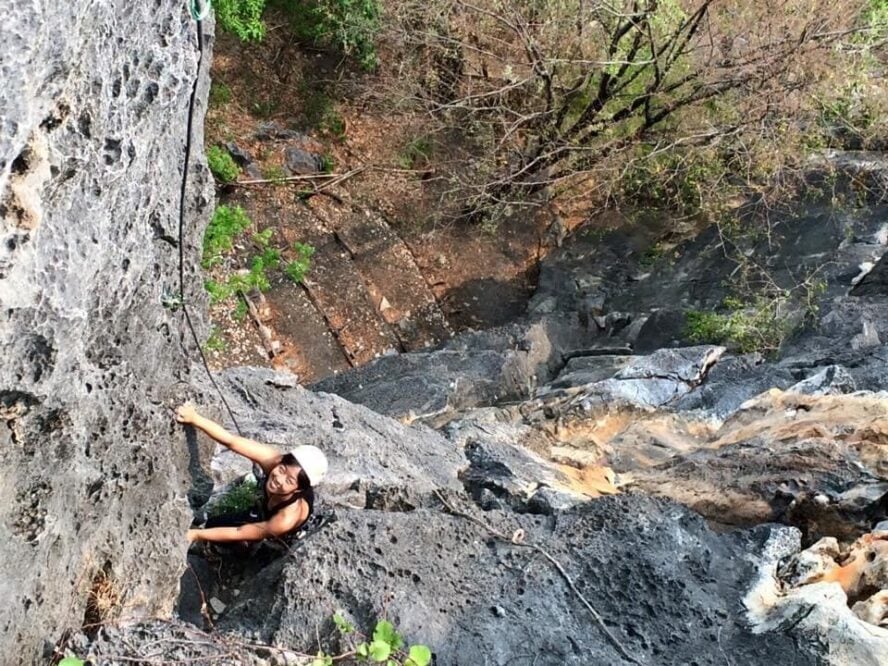
Single pitch routes for both new climbers and veterans alike
The routes here are mostly single-pitch with small, positive, and sometimes slopey holds ranging all the way from 5.6 to 5.13c, making it great for beginner and veteran climbers. It is one of the safest climbing destinations you’ll find, with glued-in titanium bolts close enough to the ground to avoid the need for a stick-clip, and close enough to each other to avoid session-ending whippers. While you may be trading in the romantic beaches at Tonsai and Railay, you’ll be just as happy to see smaller crowds and lush, lively jungles.
When and if it reopens, the best time to climb here is in January, when temperatures are a bit cooler. Due to the caves and overhangs, you can also climb during the monsoon season in August and September. Lodging at Jira Homestay, a nearby destination for like-minded climbers, is available year-round, and authentic northern Thai cuisine can be found just about anywhere.
I was so lucky to start my climbing career at Crazy Horse because there are plenty of quality routes for novices. I can’t wait until it opens back up.
Crazy Horse Buttress - Good to Know
Fly to Chiang Mai, and drive or take a bus/taxi 45 minutes to the climbing area.
Beginner to Advanced (5.6/4b to 5.13c/8a+)
Crazy Horse Buttress is currently closed to climbers. Please check back for further updates.
Largely overhanging with positive and sometimes slopey holds
Very close to Jira Homestay, a popular destination for climbers
A Guide to Rock Climbing in Northern Thailand by Josh Morris and Khaetthaleeya Uppakham
The water is not drinkable, but there are local, sustainable options and bottled water available
There are a few gear shops in Chiang Mai which offer all the climbing gear needed




